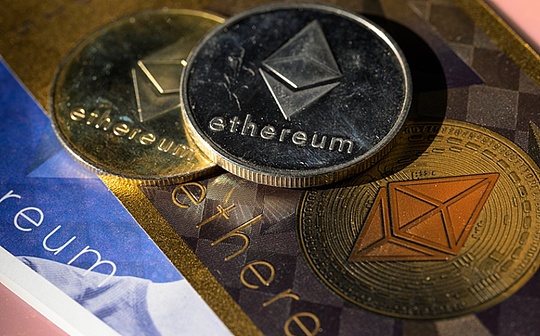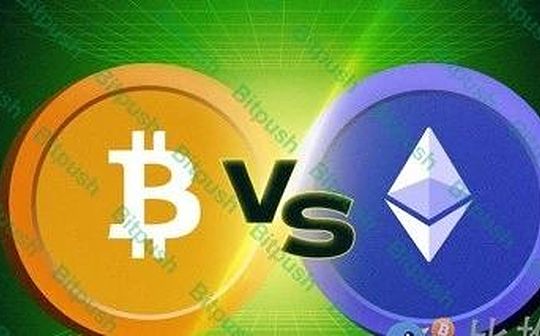
Author: laobai, ABCDE translation: Shan Oba, Bitchain Vision
In the recent first -level market, the hottest track is undoubtedly AI, followed by BTC.About 80%of the projects discussed every day are concentrated on these two tracks.Personally, sometimes I can discuss 5 or 6 AI projects a day.
It is foreseeable that artificial intelligence bubbles will reach its peak in the next few years.As hundreds of new AI projects are launched, the market value of the AI track will skyrocket.In the end, when the bubbles were broken and chaotic followed, the real unicorns who really found the intersection of artificial intelligence and cryptocurrencies would appear, promoting the development of this track and the entire industry.
Therefore, in the current AI overheating environment, it is worth a step back to observe the changes in the infrastructure layer, especially the public chain infrastructure track in recent months.Some new progress in this field is definitely worth discussing.”
1. Further deconstruction of ETH or single blockchain
When Celestia first introduced the concept of modularity and DA layer, the market actually spent a long time digesting and understanding it.Now, this concept is deeply ingrained, and various RaaS (Rollup As a Service) infrastructure has increased, so that the number of infrastructure & gt; application & gt; users have reached an exaggerated stage.
In the past few months, the execution layers, DA layers, and settlement layers have all made different technological progress.Each layer has spawned new technical solutions, and even the concept of the settlement layer is no longer unique to ETH.Let us briefly discuss the representative technology of each layer.
2. Execution level
The most popular concept of execution layer is undoubtedly Parallel EVM, represented by Monad, SEI, Megaeth and other projects.Existing projects, such as FTM and Canto, have also planned to upgrade this direction.However, just as not all ZK projects protect privacy, projects marked as parallel EVM actually have different technical roadmaps and ultimate goals.
>
A diagram of SEI as an intuitive demonstration is obvious that in the case of optimism, transition from sequential process to parallel processing can significantly improve performance.
In parallel EVM, there are actually several different technical ways.
From the perspective of how traded is in parallel, there is nothing particularly new in the world.It is attributed to the difference between pre -verification and post -verification.
Prepare verification represented by Solana and SUI requires the transaction to clearly states which parts of its modification chain state.This allows pre -examination before block production to detect any state conflict (such as accessing the same AMM pool).If conflicts are detected, discard conflict affairs.
The post -verification is also known as optimistic and parallel. It is represented by Aptos Blockstm. At first, it was assumed that there was no conflict and containing transactions.After execution, it will check whether there is a conflict.Any conflict transaction is declared invalid, refresh the result, and repeats it until all the transactions in the block are executed.SEI, Monad, Megaeth and Canto use similar solutions.
In the first -level market, we also see parallel solutions customized by scenarios involving state conflict (such as accessing the same AMM pool mentioned earlier).However, from an engineering perspective, these solutions seem to be relatively complicated, and their commercial feasibility is not yet certain, and they are still under evaluation.
The emphasis on parallel EVM can also be divided into two genres.
One of them is represented by Monad and SEI. They give priority to taking parallel affairs as the main expansion methods to make parallelization a major narrative method.
For example, in addition to optimistic parallel processing, Monad also developed MonadDB specifically for asynchronous I/O to supplement parallel processing.
Another ideological genre is represented by Fantom, Solana, and Megaeth. The parallelization is one of the expansion solutions, but it is not the only solution.In parallelization, as an auxiliary narrative, performance improvement depends more on other technical solutions.
For example, Fantom’s Sonic upgrade focuses on the optimized Lachesis consensus mechanism with FVM virtual machine.Solana’s next stage focuses on the modular architecture of Firedancer’s new client, optimized network communication mechanism, signature verification, etc.
MEGAETH aims to achieve real -time blockchain.First, it is based on the high -performance RETH client developed by Paradigm.Then, further optimization and enhancement of the state synchronization mechanism of the entire node (only synchronous status differences instead of all data), and Sequence’s hardware design (using a large amount of high -performance RAM with storage capacity for status access)., Avoid slow disk I/O), improvement of Merkle Trie’s data structure, and so on.This comprehensive optimization covers software, hardware, data structures, disk I/O, network communication and transaction sorting and parallel processing, pushing EVM’s performance ceiling to the limit, approaching the concept of “real -time blockchain”.
Three, and layer
There is no particularly important technical iterative iteration in the DA layer, so the popularity of this track is far less popular than the execution layer.There are only a few major players in the game.
ETH’s callData is upgraded to BLOB, and the cost of various second -level solutions has been greatly reduced, making ETH now a “less expensive” DA.
Interestingly, Celestia’s greater influence is that it is the first project to propose the concept of DA layer after launch.Landscape and imagination space.Many new Layer 2 application chain naturally prefer DA, of which Celestia is leading.
Avail is independent from Polygon. Technically, it is more like “enhanced version of Celestia”.For example, it uses Polkadot’s Grandpa+Babe consensus mechanism, which theoretically supports more nodes and more decentralized settings than Celestia’s Tendermint.It also supports Celestia’s unsupported features, such as validity proof.However, technical differences are far less important than the ecosystem. Avail still needs to catch up at the ecosystem level.
EIGENDA went online with the release of the EIGENLAYER main network a few days ago.As one of the most narrative projects and best at business cooperation, I personally feel that the adoption rate of EIGENDA will not be low.In theory, as long as you “feel safe and cheap”, there are not many projects who really care about whether you use effective proof or fraud proves, or whether to support DAS and so on.
Interestingly, it is worth mentioning the following three DAs.
-
Near DA -Near is an excellent public blockchain, which was originally focused on sharding, and it continued to do so.However, in addition to sharding, it also involved in the DA field.It is cheaper than Celestia and supports fast settlement of Layer 2.Chain abstraction -Recently, Near introduced a chain signature, allowing users to sign any chain transaction through a single Near account.AI — Their founder Illia is one of the eight -person Transformers. It was photographed by Mr. Huang on the NVIDIA GTC, which is very famous.They are currently planning to hire AI engineers and will issue NEAR.AI related announcements next month … As a hexagonal warrior, I have also participated in the DA track.
-
BTC & AMP; CKB -Since the first layer of BTC does not support smart contracts and direct settlement, almost every BTC EVM second -layer solution is regarded as DA.The only difference is whether they directly apply ZK Proof to BTC, or simply handle ZK Proof’s hash.It seems that if you don’t do this, you lose your qualifications called “BTC Layer 2”.Recently, new projects say, “I won’t pretend; I won’t pretend.”I am ETH L2, DA settlement is carried out on ETH, but I serve the BTC ecological!”It is quite interesting … the only unconventional zoom solution is the RGB ++ introduced by CKB. In this framework, CKB acts as a pseudo -DA, and BTC has become a settlement layer of RGB ++ due to its UTXO universal homogeneous binding technology.
-
The new DA -I will mention two innovative DA methods I encounter, but it will not mention specific projects.A storage layer that integrates DA and AI as a high -performance DA, but also acts as AI models, training data and training trajectories.Another RS code that improves the bottom layer of CELESTIA, provides a more stable network state under unstable conditions. For example, each round has multiple dynamic networks with multiple nodes withdraw from.
Fourth, sedimentation
Initially, this layer was almost dominated by ETH.Although DA faces competition from Celestia and has various L2 solutions, the settlement is mainly an ETH field.There are no L2 solutions such as Solana, APTOS and other chain stores.The L2 solution of BTC is either not used or unable to use BTC for settlement.At present, ETH is almost the only settlement layer you can think of.
However, this situation is about to change.Several new projects are developing in the direction mentioned at the beginning of this article.Some old projects have also begun to transform in this direction, namely -ZK verification/settlement layer -further deconstructing ETH (stealing ETH business).
Why does this concept appear?
The reason is that it is not the best choice in ETH L1 to verify that ZK Proofs is theoretically not theoretically.
From a technical point of view, in order to verify the correctness of ZK Proofs, developers need to use Solidity based on the ZK project and the selected ZK Proof system to write verification contracts.This involves a variety of encryption algorithms, such as supporting different oval curves.These encrypted algorithms are usually very complicated, and the EVM-SoLidity architecture is not the best platform for achieving these complex encryption algorithms.For some ZK projects, the cost of writing and verifying these verification contracts is also quite high.
This has hindered some ZK ecological native to the EVM ecology to a certain extent.Therefore, ZK -friendly language such as Cario, Noir, Leo, Lurk can only be verified on its Layer1.At the same time, the update or upgrade of ETH always involves “big boats”.
In terms of cost, although most of the “protection fees” paid by L2 are DA fees, the ZK contract verification will also generate GAS fees.Verification on Ethereum is definitely not a cheap choice.Coupled with the GAS cost of Ethereum, it will occasionally soaring, turning it into a “high -quality chain”, and the verification cost is also affected.
As a result, a new project with the concept of ZK verification/settlement layer appeared.These new projects are still in the early stage, and Nebra is a typical example.The older projects are also developing in this direction, such as MINA and Zen, who have just passed new proposals.
The overall method of most projects in this orbit is basically:
-
Support multiple ZK languages
-
Support ZK aggregation proof, improve efficiency, reduce costs
-
Realize faster final determination time
The ZK settlement layer is likely to be closely linked to the decentralization proof of the market, because it is not enough to have technology; it also requires computing power.We may see some settlement layers projects with proof of market project cooperation.Alternatively, a settlement layer with computing power may establish its own proof market, and the technical expertise proves that the market project may adventure into the settlement layer.In the end, the market will determine the way forward.
In other areas of infrastructure, such as Oracle and MEV fields (OEV) and interoperability (ZK light client network), there may be many articles on the Internet.I will not study them here.What fresh and interesting things will be shared next time.








